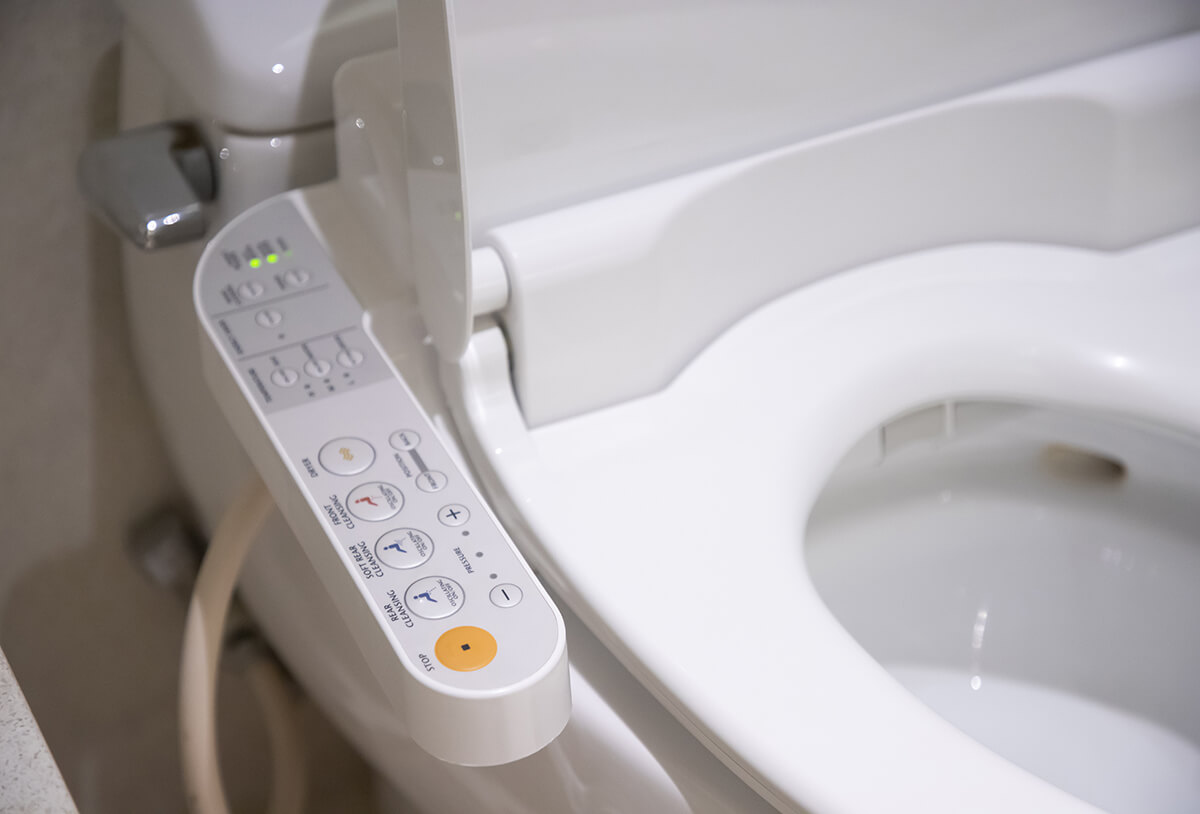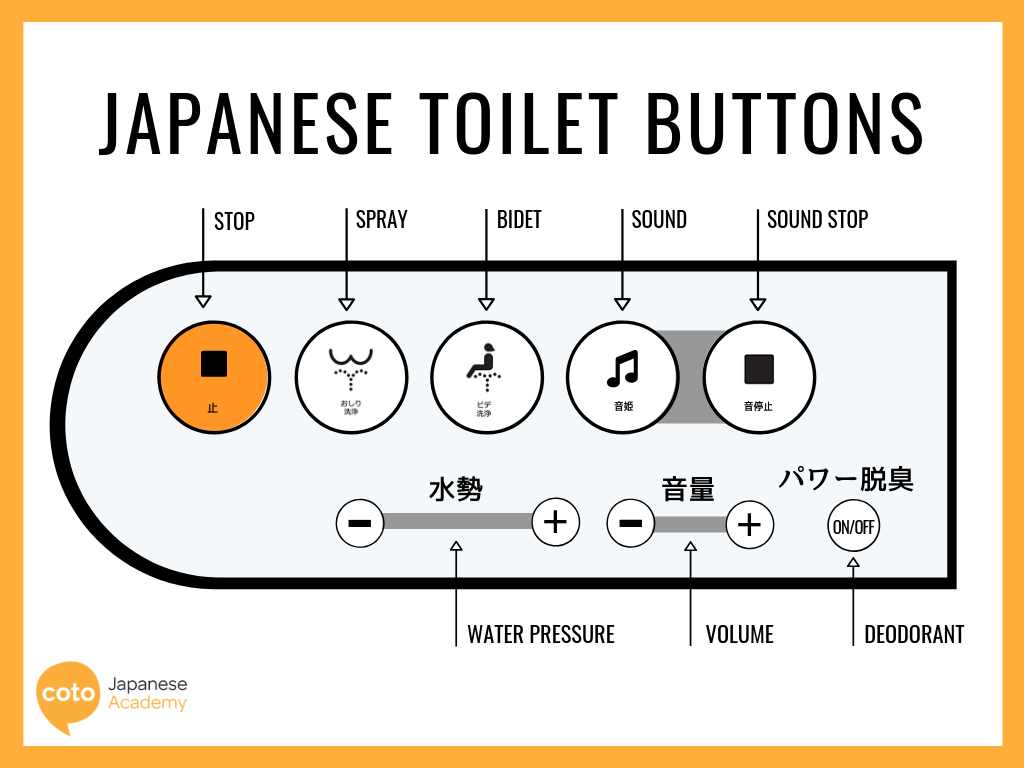
 Summary:
Summary:
Modern Japanese toilets (commonly called washlets) can seem complicated at first, but once you understand the basic buttons and features, they are intuitive and hygienic to use. This guide will walk you through how to operate your bidet toilet, what the symbols mean, tips for comfort and safety, and when to contact maintenance.
Based on detailed guides from sources like TOTO and Japan Living Guide. Japan Living Guide+2Coto Japanese Academy+2
🧭 1. Identify Your Toilet Type & Panel
Before you sit down:
Most units will have a side-mounted control panel or a wall-mounted remote with buttons and icons.
Look for buttons labelled 「おしり」(oshiri – buttocks) and 「ビデ」(bide – bidet/front wash). Coto Japanese Academy
Familiarize yourself with the icons: water spray, stop, power, dryer, etc. Go! Go! Nihon+1
🧺 2. Step-by-Step: How to Use the Bidet Toilet
2.1 Sit Down & Get Ready
Sit down normally on the toilet seat—the washlet functions are often only activated when the seat sensor detects a user. travelwithamnet.com
Lower the lid (many units will lift automatically but not always).
2.2 Use the Cleaning Functions
Rear wash (おしり): Press the button marked “おしり” to rinse your back side.
Front wash / Bidet (ビデ): Press “ビデ” for a gentler spray aimed at the front (typically for female users). Foleys In Japan+1
Adjust water pressure: Buttons may say 「水勢」 (suisei – strength) with symbols “弱” (low) and “強” (high). Go! Go! Nihon
Adjust water temperature or seat warmer if your unit has those options (many units display “温水” or “温度設定”). Matcha Travel Guide
2.3 Stop & Dry
To stop any spray, press 「止/とめ」(stop/tome) — often a red button. Foleys In Japan
If your unit has a dryer, press the “乾燥” (kansō) button and wait a moment until you feel the warm air.
After finishing, flush using the button labelled 「流す」(nagasu) or by pressing the lever/tank handle. Some units have big/small flush options: “大” (dai) / “小” (shō). Time Out Worldwide
 🛠 3. Key Symbols & Buttons You Might See
🛠 3. Key Symbols & Buttons You Might See
| Symbol / Japanese | Meaning | Notes |
|---|---|---|
| 「おしり」 (oshiri) | Rear wash | Use after number 2 |
| 「ビデ」 (bide) | Front wash/bidet | Gentler, front area |
| 「水勢 弱/強」 | Water pressure (low/high) | Adjust spray strength |
| 「温水」「温度設定」 | Warm water / Temperature setting | Some units control these |
| 「止」「とめ」 | Stop | Ends spray or dryer |
| 「流す」 (大/小) | Flush (large/small) | Choose based on usage |
| 「乾燥」 (kansō) | Dryer | Warms and dries after wash |
| 「音姫」 (oto-hime) | Sound “princess” water sound | Some units play sound to mask noise Japan Living Guide |
✅ 4. Comfort & Safety Tips
Let the seat warm for a second before sitting (especially in winter).
Adjust water pressure gradually — high pressure may startle you.
Make sure the nozzle clears before spraying (most units self-clean first).
If you have a skirt or loose clothing, ensure it’s out of the way before activating spray.
Do not stand on the toilet seat or lean excessively — it’s designed for sitting.
If you see an error code or flashing light, press “止” and report the unit.
Clean gently — strong chemicals can damage washlet seats. News.com.au
⚠️ 5. If the Toilet Doesn’t Work
If you follow the steps and the unit still doesn’t function:
Check the power plug (many washlets are powered by a nearby outlet).
Check if the seat sensor is active (some won’t spray until you sit).
Try pressing “止” / “とめ” to reset any spray in progress.
If none of that helps, submit a maintenance request
Comments
0 comments
Please sign in to leave a comment.